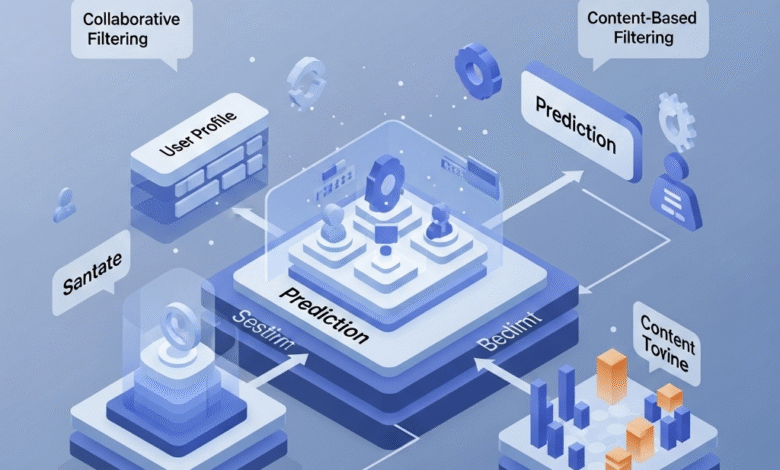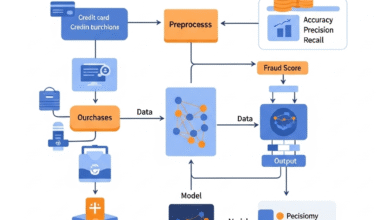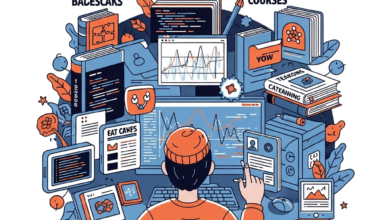Recommendation System Machine Learning
How Recommendation System Machine Learning Powers Your Digital World (And How It Works!)

Recommendation System Machine Learning
Your Netflix Binge, Decoded: How Recommendation System Machine Learning Powers Your Digital World (And How It Works!)
Hey there, curious mind! Ever wonder how Netflix just knows you’d love that quirky sci-fi series after you finished a documentary? Or how Spotify magically creates a playlist that feels like it crawled inside your brain? Or why Amazon seems to suggest that exact gadget you were thinking about? Spoiler alert: it’s not magic (though it feels like it!). It’s the incredible power of recommendation system machine learning working behind the scenes 24/7. Think of it as your super-smart, hyper-personalized digital concierge. Ready to peek under the hood and understand how these modern marvels tick? Let’s dive into the fascinating world where algorithms learn your tastes to make your digital life smoother, more engaging, and maybe even a little addictive!
Why Recommendation System Machine Learning is EVERYWHERE (And Why You Should Care)
Seriously, recommendation system machine learning isn’t just about suggesting movies or songs anymore. It’s woven into the fabric of almost every online experience you have:
-
Shopping: Amazon, Target, Etsy – suggesting products you might like (“Frequently bought together,” “Customers who viewed this also viewed…”).
-
Entertainment: Netflix, Hulu, Spotify, YouTube – recommending shows, movies, music, and videos.
-
Social Media: Facebook’s News Feed, Instagram Explore, TikTok’s “For You Page,” LinkedIn job suggestions.
-
Food & Groceries: DoorDash, Uber Eats, Instacart – recommending restaurants, dishes, or items based on past orders.
-
News & Content: Google News, Apple News, Reddit – surfacing articles and posts tailored to your interests.
-
Travel: Booking.com, Expedia, Airbnb – suggesting destinations, hotels, or experiences.
Why does this matter to YOU? Because a good recommendation system machine learning setup saves you time, helps you discover awesome new things you genuinely enjoy, and makes interacting with apps and websites feel effortless and personalized. For businesses, it’s the golden key to keeping you engaged, boosting sales, and building loyalty. It’s a win-win powered by smart tech!
The Secret Sauce: How Recommendation System Machine Learning Actually Works
Okay, let’s ditch the jargon and break down the core ideas. At its heart, a recommendation system machine learning model is trying to predict what you’ll like based on patterns. It does this by crunching massive amounts of data using clever algorithms. Here are the main approaches:
-
Collaborative Filtering: “People Like You Liked This!”
-
This is the classic “wisdom of the crowd” approach. The system looks for users who have similar tastes or behaviors to you (your “neighbors”).
-
Example: If User A loved Movies X, Y, and Z, and User B loved Movies X and Y, the system predicts User B will probably also like Movie Z and recommends it.
-
Pros: Doesn’t need to know much about the items (movies, products), just how users interact with them. Great for discovery.
-
Cons: Struggles with new items that have no interaction history (“Cold Start Problem”). Can get less accurate if you have unique tastes.
-
-
Content-Based Filtering: “Because You Liked That, You Might Like This!”
-
This method focuses on the characteristics of the items you’ve liked and finds other items with similar characteristics.
-
Example: If you watched several “Action Movies starring Keanu Reeves,” the system will recommend other “Action Movies” or “Movies starring Keanu Reeves.”
-
Pros: Great for recommending niche items. Avoids the “Cold Start Problem” for new users if you have item features. Highly personalized to your specific item preferences.
-
Cons: Can get stuck in a “filter bubble,” only recommending very similar things, limiting discovery. Requires good data about the items (genre, actors, tags, descriptions).
-
-
Hybrid Methods: The Best of Both Worlds!
-
This is where things get really powerful. Most modern, effective recommendation system machine learning models combine collaborative and content-based filtering (and sometimes other techniques!).
-
Example: Netflix might use collaborative filtering to find users like you AND content-based filtering on genres/actors, then blend the results for super-accurate suggestions.
-
Pros: Overcomes the limitations of the individual methods. Provides more accurate, diverse, and serendipitous recommendations.
-
Cons: More complex to build and maintain. Requires more data and computational power.
-
Under the Hood – The Machine Learning Magic:
How do these approaches actually “learn”? That’s where specific machine learning algorithms come in:
-
Matrix Factorization (e.g., SVD – Singular Value Decomposition): A powerhouse for collaborative filtering. It takes the huge user-item interaction matrix (who rated/bought/viewed what) and breaks it down into hidden “factors” that represent latent features (like how much a movie leans towards “action” or “romance,” even if those tags weren’t explicitly given).
-
Deep Learning Models (e.g., Neural Collaborative Filtering, Transformers): These complex neural networks can find incredibly intricate patterns in user behavior and item features. They excel at handling sequential data (like your watch history order) and combining different data types (text descriptions, images, audio features). Think of them as the super-sleuths of recommendation system machine learning.
-
Association Rule Learning (e.g., Apriori Algorithm): Often used for “Frequently Bought Together” recommendations by finding items that commonly appear together in transactions.
Building a Smarter Recommender: Key Steps & Pro Tips
Creating an effective recommendation system machine learning solution isn’t just plug-and-play. It’s a journey. Here’s a roadmap and some expert insights:
-
Define Your Goal Clearly: What do you want to achieve? Increase sales? Boost watch time? Improve user engagement? Drive content discovery? Your goal dictates the metrics you’ll track and the approach you prioritize.
-
Gather & Clean Your Data (This is CRUCIAL!): You need data, and lots of it! Key types:
-
User Data: IDs, demographics (optional, privacy-conscious!), past behavior (clicks, views, purchases, ratings, time spent, search queries).
-
Item Data: IDs, attributes (categories, tags, descriptions, price, brand), features (extracted from text/images using ML).
-
Interaction Data: The gold! User-Item interactions (purchase, view, rating, add-to-cart, play), including timestamps and context (device, location).
-
Pro Tip: “Garbage in, garbage out.” Spend significant time cleaning and preprocessing your data. Handle missing values, remove duplicates, normalize data formats. Data quality is paramount for recommendation system machine learning success.
-
-
Choose Your Approach(es): Start simple? Go hybrid? Consider your data availability, business goals, and technical resources. Often, starting with collaborative filtering is effective if you have interaction data.
-
Feature Engineering: This is where you create meaningful inputs for your models. Transform raw data into features the algorithms can understand. Examples:
-
Creating user profiles based on their interaction history.
-
Extracting key features from item descriptions (using NLP techniques like TF-IDF or embeddings).
-
Calculating time-based features (recency, frequency).
-
Pro Tip: Context matters! Features like time of day, day of week, location, or device can significantly improve relevance (e.g., recommending lunch places at noon).
-
-
Select & Train Your Model(s): Pick the right ML algorithms. Train them on historical data (e.g., 80% of your data) to learn the patterns. Experiment! Try different algorithms and hyperparameters (model settings).
-
Evaluate Relentlessly: How do you know if your recommendation system machine learning model is actually good? Use robust metrics:
-
Accuracy Metrics: Precision (Of the items I recommended, how many were relevant?), Recall (Of all relevant items, how many did I recommend?), RMSE/MAE (For ratings, how far off were my predictions?).
-
Ranking Metrics: Mean Average Precision (MAP), Normalized Discounted Cumulative Gain (NDCG) – measure how well your ranked list of recommendations matches the ideal order.
-
Business Metrics: Click-Through Rate (CTR), Conversion Rate, Average Order Value (AOV), Watch Time, Session Length. Ultimately, these matter most!
-
Pro Tip: Use A/B testing! Show different recommendation algorithms to different user segments and see which one performs best on your key business metrics.
-
-
Deploy, Monitor, Iterate: Launch your recommender! But your work isn’t done. Continuously monitor its performance. Track key metrics. Gather user feedback. Retrain your models regularly with fresh data to adapt to changing user preferences and new items. Recommendation system machine learning is an ongoing process, not a one-time project.
Beyond the Basics: Cutting-Edge Trends in Recommendation System Machine Learning
The field is moving incredibly fast! Here’s what’s pushing the boundaries:
-
Deep Learning Dominance: Models like Neural Collaborative Filtering (NCF), Wide & Deep Learning (combining memorization & generalization), and graph neural networks (GNNs) for complex user-item relationships are setting new standards for accuracy.
-
Sequential Recommendations: Focusing on the order of user actions (like your watch history sequence) using Recurrent Neural Networks (RNNs) or Transformers (like BERT4Rec) to predict the next best item.
-
Reinforcement Learning (RL): Treating recommendations as a series of actions where the system learns optimal strategies through trial and error to maximize long-term user engagement (think TikTok’s addictive “For You Page”).
-
Context-Aware Recommendations: Incorporating real-time context (time, location, device, weather, social context) much more deeply to make hyper-relevant suggestions right now.
-
Explainable AI (XAI): Making recommendations less of a “black box.” Providing users with reasons why something was recommended (“Because you watched…”, “Popular with people who bought…”) builds trust and transparency.
-
Focus on Fairness & Diversity: Actively combating bias and filter bubbles. Ensuring recommendations aren’t discriminatory and expose users to a wider range of content/products, promoting serendipity and equity. This is a critical ethical frontier for recommendation system machine learning.
Putting It All Together: Why Understanding This Tech Rocks
Whether you’re a developer building the next big app, a marketer trying to personalize customer journeys, or just a digitally-savvy user, grasping the fundamentals of recommendation system machine learning is incredibly valuable.
-
For Businesses: It’s a competitive necessity. Personalized experiences drive revenue, loyalty, and user satisfaction. Investing in robust recommendation system machine learning is investing in growth.
-
For Developers & Data Scientists: It’s a fascinating and high-impact field with constant innovation. Mastering these skills is in huge demand.
-
For Users: Understanding the “why” behind your recommendations gives you more control. You can sometimes provide feedback (“Not Interested,” “Tell us why”), influencing the algorithm. You can also be more mindful of potential filter bubbles and seek out diverse content proactively.
Your Personalized Future is Bright (Thanks to Algorithms!)
The next time you get that spot-on recommendation that makes you say, “How did they know?”, remember the complex, fascinating dance of data and algorithms happening behind the scenes. Recommendation system machine learning is constantly evolving, getting smarter, more contextual, and more integrated into our lives. It’s a testament to the power of data and intelligent algorithms to create experiences that feel uniquely tailored to you.
So, embrace the convenience, enjoy the discoveries, and maybe even appreciate the sheer technological ingenuity the next time your perfect playlist starts or that must-have product pops up. The future of personalization, powered by recommendation system machine learning, is already here – and it’s only getting better! What will it recommend for you next?





